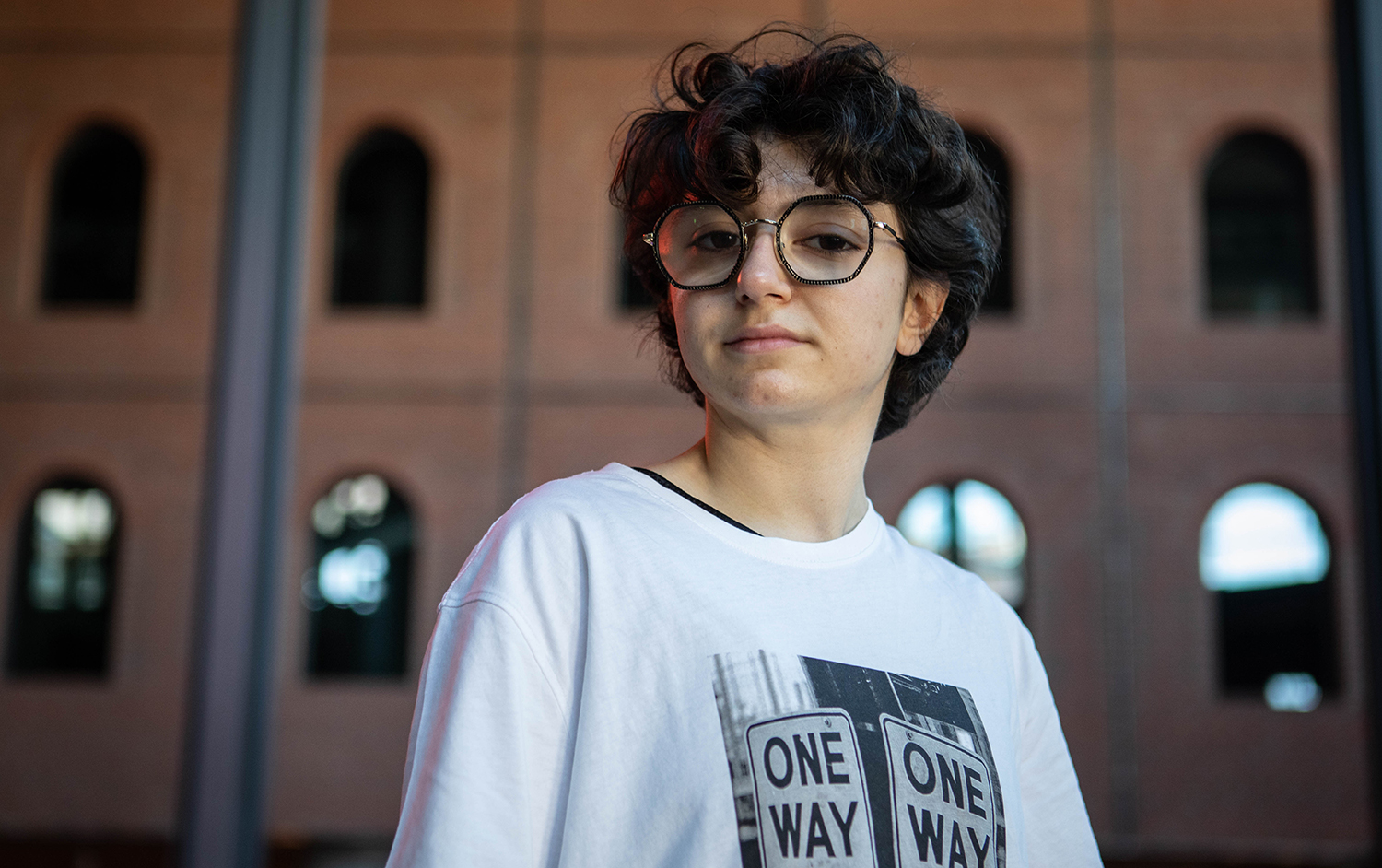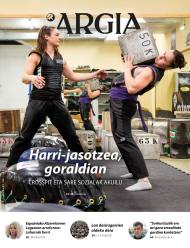"As I'm very literal, I like to understand what I draw"
- He is imaginative and humorous, and drawing is his passion. Selva Iriarte Eletxigerra (Bilbao, 2001) has created the illustrated book Autism and Me (Chalaparta, 2025) to make autism visible. It is a book based on his life. It has mainly benefited from figurative art: “I have seen that I can also express my thoughts through abstraction, but I prefer to explain it in an illustrated way.”

An alien feels like the protagonist of Autism and I, and that’s how Selva Iriarte feels, as if she had missed the day that the guide was distributed to explain what the keys to relating to people are. He wrote a book about living with autism: “I wanted to make a kind of guide for people to know a little more about the subject.” When he created the book he did not expect people to feel identified, but later he saw that many have seen themselves reflected: “It can be very helpful to make other autistic people feel less extraterrestrial.”
Iriarte makes it clear in her book that autism is not the same for all people, and that like everyone, every autistic person is a world. That’s why you think it’s important to get to know the person before you take anything for granted. The book Autism and Me offers some keys to getting to know Iriarte better, including his particular interest in drawing. He has studied art and the book is the result of the Final Degree Project (GrAL). The book was presented on April 29 at APNABI in Bilbao.
Because he was “very angry” with the disability assessment system, he felt that there was a need to make autism visible and that GrAL was an opportunity to do so. She went to the Provincial Council of Bizkaia to reassess her disability, which was reduced from 33% to 20%: “It depends and how they see you that day, they give you a percentage or another. If you don’t show all your bad symptoms right that day, it seems like what happens to you isn’t that bad, you get along great and you don’t need help.”
“Powerful lights have a great influence on him, when they don’t explain things to him exactly they seem ambiguous and sometimes he has a hard time sorting ideas”
Some of the challenges that Iriarte has mentioned are, for example, that powerful lights have a great influence on him, that when they do not explain things to him exactly they seem ambiguous, and that sometimes it is difficult for him to put his ideas in order. Because his disability percentage has dropped, he is unable to access certain aids, such as grants: “I find it absurd to have a percentage if I can’t ask for anything and it’s as if I don’t have a diagnosis.” He tried to claim it, for which he presented articles, a report made by the psychologist and many other things, but he received a negative in return.
He feels that although there is more and more talk of autism, there is still “a lot of ignorance”: “Sometimes you don’t see autism. People think it doesn’t happen, that we always get along well and that we don’t make any effort, but that’s not true.” Iriarte talks about masking, that is, camouflaging autistic traits to make it seem neurotypical: “I have to do a very conscious and active exercise to hide my autistic traits. It's very tiring. After being with people I don’t have the energy to do anything, I need a lot of time to be on my own and sometimes I end up completely fed up.”
The black boss
He uses many colors to talk about autism, but black plays a big role in the book. He has mainly used black in the episode of crisis because he wanted to represent an emotional collapse: “‘Meltdown’ is when you can no longer physically and mentally, when everything that comes from outside and inside is too much, and you have to expel it somehow.” When he introduced the GrAL, one of the teachers asked him why he had not used the greys, but Iriarte was clear that he wanted to reflect it in the way he lives: “In those moments I don’t see greys, everything is black, crude and violent because it’s the most stressful situation I can live in.”
In addition to colors, he has especially taken advantage of figurative art to represent all these emotions and experiences. She has always loved drawing: “Because I’m very literal I like to understand what I draw.” That’s why he draws things as they are and as they are raw, without losing them in euphemisms and ornaments: “I prefer to say that things are easy for people to understand.” However, over the years he has developed a taste for abstraction and has made more abstract drawings in the crisis section: “I have seen that I can also express my thoughts through abstraction, but I prefer to explain it in an illustrated way.”
AN AREA OF THE BODY?
“I would choose eyes because ironically I can’t look at them. I've always heard that the eyes are windows to the soul, and I think it's true. They say a lot about how we feel. I think most of my expressiveness is learned, but the issue of the eyes is inherent. Also, the person I represent in the book has a lot of eyes because it seems that I look everywhere except where I have to look.”
.jpg)
.jpg)










